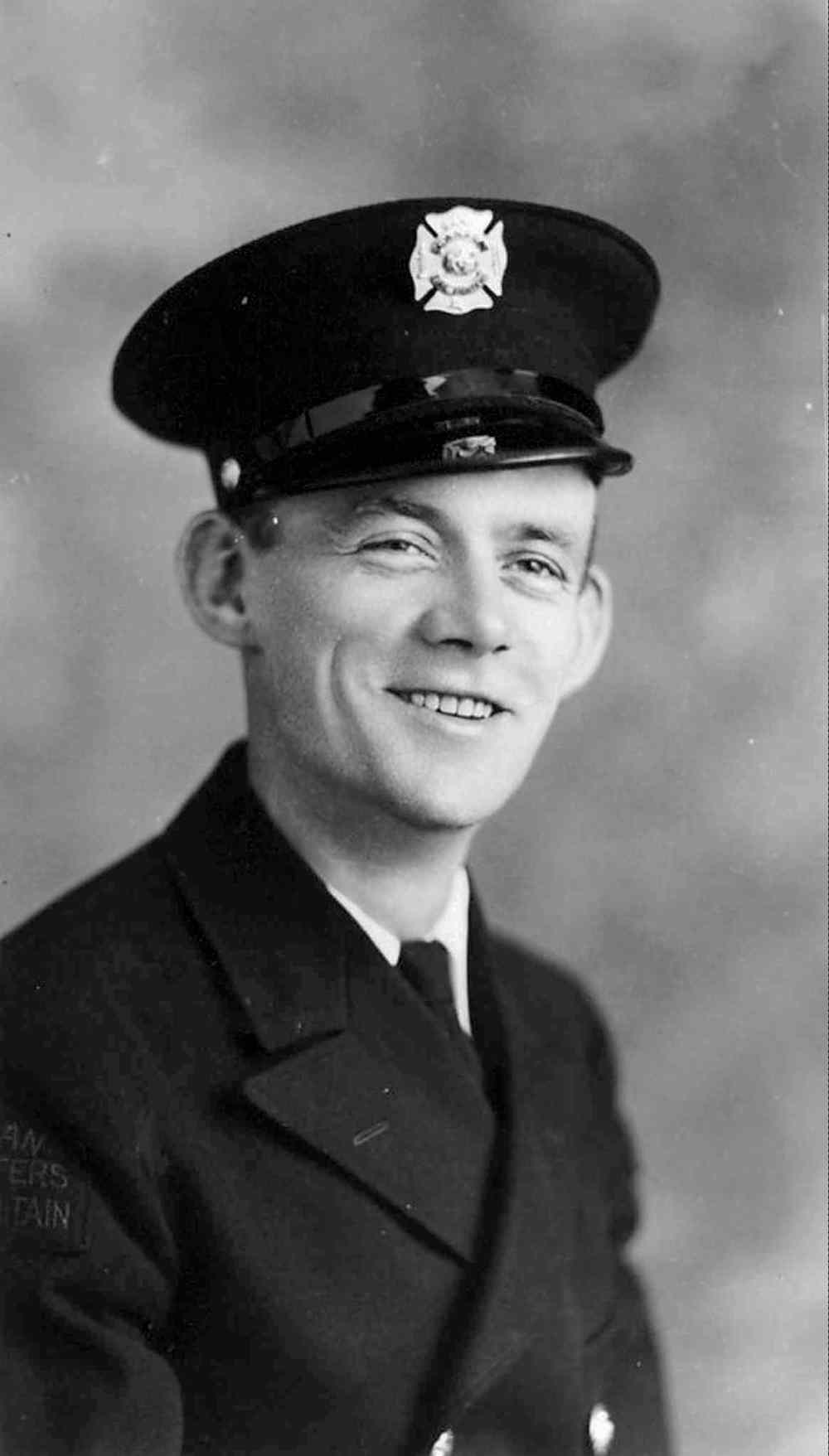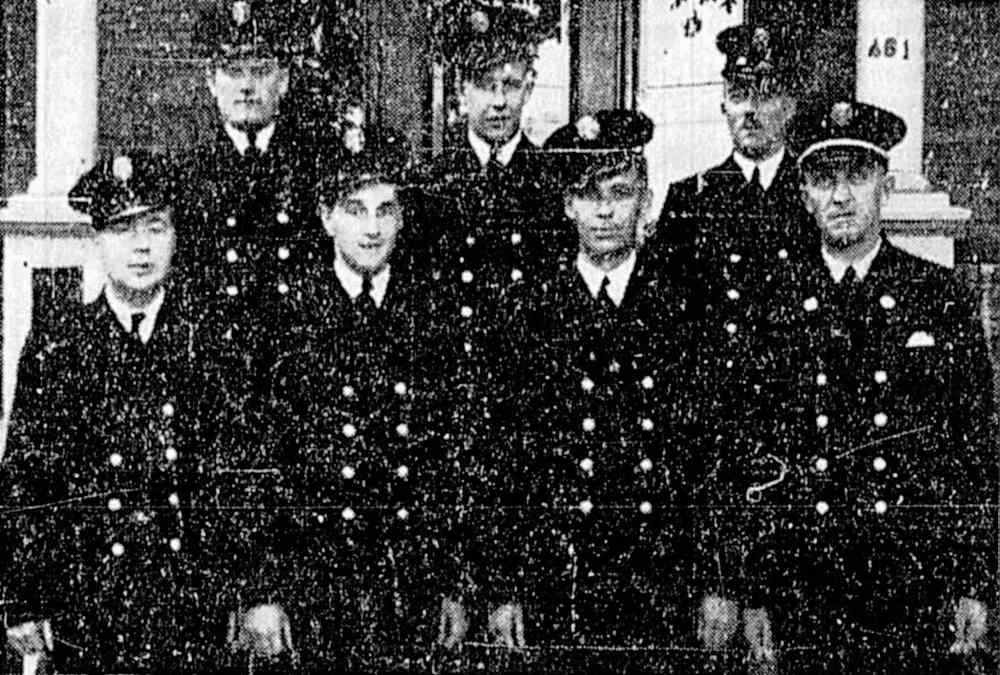A different kind of firefight: Winnipeggers helped battle blazes in the Blitz
Advertisement
Read this article for free:
or
Already have an account? Log in here »
To continue reading, please subscribe:
Monthly Digital Subscription
$0 for the first 4 weeks*
- Enjoy unlimited reading on winnipegfreepress.com
- Read the E-Edition, our digital replica newspaper
- Access News Break, our award-winning app
- Play interactive puzzles
*No charge for 4 weeks then price increases to the regular rate of $19.00 plus GST every four weeks. Offer available to new and qualified returning subscribers only. Cancel any time.
Monthly Digital Subscription
$4.75/week*
- Enjoy unlimited reading on winnipegfreepress.com
- Read the E-Edition, our digital replica newspaper
- Access News Break, our award-winning app
- Play interactive puzzles
*Billed as $19 plus GST every four weeks. Cancel any time.
To continue reading, please subscribe:
Add Free Press access to your Brandon Sun subscription for only an additional
$1 for the first 4 weeks*
*Your next subscription payment will increase by $1.00 and you will be charged $16.99 plus GST for four weeks. After four weeks, your payment will increase to $23.99 plus GST every four weeks.
Read unlimited articles for free today:
or
Already have an account? Log in here »
Hey there, time traveller!
This article was published 01/03/2015 (3929 days ago), so information in it may no longer be current.
Firefighting can be a dangerous job at the best of times, but imagine doing it while bombs and missiles rain down around you.
This is what many British fire crews faced during the Second World War and what more than 400 Canadians volunteered to do with the Corps of (Civilian) Canadian Firefighters. Though national in scope, the idea for the organization was born in Winnipeg, and one local firefighter paid the ultimate price.

In the lead-up to the Second World War, the British government announced it would supplement its regular National Fire Service with the Auxiliary Fire Service, which trained 28,000 men and women to provide additional support. Both were put to the test starting on the afternoon of Sept. 7, 1940, when 300 German bombers appeared in the air over London. It was the first of 76 straight days of bombings and an eight-month campaign against numerous British cities that became known as the Blitz.
In Winnipeg, one man who saw the images of the dire conditions British firefighters had to contend with was David S. Dunnett, a firefighter at the No. 3 Fire Hall on Maple Street, now the Fire Service Museum of Winnipeg. He came up with the idea of raising a firefighting corps of 500 men to provide relief to his beleaguered colleagues.
In October 1940, Dunnett presented his idea to City of Winnipeg fire Chief Daniel Boulden, who gave him permission to take it directly to Premier John Bracken. The premier was so impressed, he is said to have called the minister of national defence about it while Dunnett was still in the room.
Initially, the idea seemed to go nowhere, but Vancouver fire Chief O. L. Lister helped keep it alive on the national stage. Then, during a September 1941 official visit to London, Prime Minister Mackenzie King declared in front of a cheering crowd at the Hackney Town Hall: “Very soon, London firefighting forces will be joined by Canadian firemen.”
Boulden was the first man chosen to lead the corps. Appointed to the position in 1928, he had a reputation as an efficient, tough and sometimes heavy-handed leader, which is exactly what the military needed to pull the corps together in a short amount of time. The city saw freeing up Boulden as part of its contribution to the war effort. A Winnipeg Tribune editorial said, “Winnipeg can spare Chief Boulden because the need is greater over there than it is at home.”
It came as a surprise, then, when Boulden suddenly resigned from the post on Dec. 27, 1941 after being found “not physically fit for service under overseas conditions.” Newspapers did not pry into details about the nature of his problem, and days later Boulden resumed his job as Winnipeg’s fire chief, which he held until 1947.
The next leader of the corps also had Winnipeg connections. Gordon E. Huff was chief of the Brantford, Ont., fire department, but since enlisting in 1940 was a fire-prevention officer in the RCAF’s No. 2 Training Command in Winnipeg. He and his wife lived on Furby Street when his appointment was announced.
With the organizational framework in place, the order-in-council to create the all-volunteer Corps of (Civilian) Canadian Firemen was signed on March 3, 1942.

Active firefighters from across Canada were encouraged to sign up, though nobody was turned away. It’s estimated about 30 per cent of the volunteers had no previous firefighting experience.
It is perhaps because of the number of local connections with the formation of the corps that such a large number of Winnipeggers signed up. Of the 422 men who volunteered, around 30 were from our city. The vast majority of them were firefighters, some with more than 10 years’ experience. In a May 24, 1944 Winnipeg Free Press article, the corps’ column officer, D. Lang, congratulated the Winnipeg fire department for having the second-largest contingent of any municipal fire department in Canada.
The firefighters were sent to Ottawa for three weeks of specialized training, then — over the course of six months — deployed to London. The first contingent of 40 firefighters arrived in June 1942 and were welcomed at a public ceremony in Trafalgar Square. British Home Secretary Herbert Morrison said: “You come to work with our men, to train and exercise with them, and when the day of trial comes again — as none of us forget, it may come with very little warning — you will be here to help us meet and defeat its terrors.”
The corps fell under the umbrella of the British National Fire Service, though to avoid the confusion of having a blended force with different training backgrounds and leadership, the Canadians were kept together. They were broken into units of around 50 and took over six fire halls: two in Southampton, two in Portsmouth, one in Plymouth and one in Bristol. Some were stationed at the service’s London headquarters.
The corps enjoyed some initial media attention, but that changed once they were deployed. The exact size of the force and their locations were considered a secret so as not to tip Germany off as to which centres had extra fire-and-rescue resources and which didn’t.
Though the corps arrived a year after the Blitz was over, air raids were still a common occurrence. In 1944, a renewed campaign of attacks began with new German weapons, the V1 and V2 rockets, also known as “doodlebugs” or “buzz bombs.”
July 3, 1944 was a particularly bloody day. The Germans hammered the London area with V1 rockets. One strike killed at least 63 American servicemen and eight civilians in Chelsea, and another destroyed the Ashley Road police station. One rocket struck a building near Wimbledon, sending debris onto a number of firefighters — killing two and wounding two others. Two of these casualties were from Winnipeg.
Killed in action was John (Jack) Stewart Coull, 36. He was born and raised in Lossiemouth, Scotland and began his career with the Winnipeg fire department in 1932. The following year, he married a Norwegian immigrant named Erna Torgeresen, and they had a daughter, Joyce. When Coull enlisted in May 1942, Erna and six-year-old Joyce lived at the Muskoka Apartments at 110 Young Street. He was buried in his birthplace at the Lossiemouth Burial Ground.

In 2003, a plaque was erected in London to “Fireman J.S. Coull (Winnipeg) who died as a result of enemy action when a V1 flying bomb fell on part of Wildcroft Manor, adjacent to this site on 3rd July 1944.”
Winnipeg firefighter Robert Legree was injured in the same attack. Initially listed in serious condition, he was soon upgraded to good and shipped back home to recuperate. All of Legree’s siblings — three brothers and one sister — were also on active service during the Second World War. One brother was killed in action.
In all, the Corps of (Civilian) Canadian Firefighters suffered 11 casualties, including three deaths and three serious injuries. In addition to Coull, there was Alfred Lapierre of Montreal, one of the oldest to volunteer at age 49, who was struck by a vehicle. Also, Lawrence E. Woodhead, 33, of Saskatoon, who died when he fell from a fire truck.
As 1944 wore on, the number of rocket attacks dwindled, and it was decided that after 21/2 years, it was time for the Canadians to come home. On Nov. 4, 1944 a large number participated in a farewell ceremony that included a march past Canada House on Trafalgar Square.
This should have been the end of the story for members of the corps, but when they arrived home, they found they had more battles to fight.
When the corps was initially formed, it was decided it would be a civilian force, not a military one, as their purpose was to supplement an existing civilian organization. It wasn’t until their service was done they found out what being a civilian member of the Canadian military actually meant.
They already knew they were not entitled to get military pay. Instead, they received a government stipend of $1.30 per day (about $18 in 2015 dollars). What came as a surprise was unlike other soldiers, this income was deemed to be taxable. Though the base stipend fell under the income tax threshold, about 10 per cent of the men who served in senior roles returned to find tax bills of around $700 waiting for them. It took four years of lobbying before the government rescinded these bills.
Another surprise was they weren’t eligible to receive any military honours for their service. In 1945, a special Fire Fighters Canada and Overseas war service badge was created and distributed to members of the corps. It wasn’t until 1947 a federal order-in-council was passed that allowed the widows or mothers of those killed in action to receive the Memorial Cross.

Of most importance to many of these men and their families was the fact they were not entitled to any veterans’ benefits, such as health care, rehabilitation services, disability pay or pensions.
This omission received a great deal of attention in the media, and motions of support were passed by the Manitoba and other legislatures, the Royal Canadian Legion and Army, Navy & Air Force Veterans in Canada (ANAVETS). A parliamentary committee twice recommended to Parliament these benefits be extended to members of the corps. The government’s excuse for not granting these benefits was these men were expected to return to their old workplaces, so such benefits would not be needed. Besides, it had moved on from the war and was more occupied with restarting the civilian economy and solving a national housing crisis than tinkering with military benefit provisions. There surely was recognition that extending benefits to firefighters would also mean the Merchant Navy, Red Cross and other civilian groups composed of thousands of Canadians would expect the same treatment.
In the end, it wasn’t until March 2000, 56 years after they came home, that Parliament passed a bill that granted the Corps of (Civilian) Canadian Firefighters — along with the Newfoundland foresters, the Ferry Command, the Red Cross and other nursing organizations — the veterans’ pensions and benefits they deserved.
Christian Cassidy explores Winnipeg history on his blog, West End Dumplings.

Our newsroom depends on a growing audience of readers to power our journalism. If you are not a paid reader, please consider becoming a subscriber.
Our newsroom depends on its audience of readers to power our journalism. Thank you for your support.

